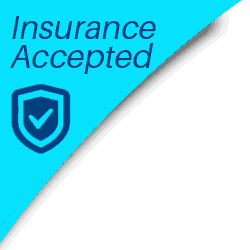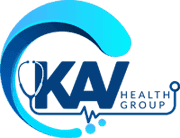Opioid Addiction & Withdrawal Treatment in Ohio
Ohio Opioid Addiction Treatment Clinic
Opioid addiction has been an epidemic for decades, especially in Ohio. From 2010 to 2016 alone, the number of deaths from opioid overdose more than tripled in Ohio, from 974 to 3411. [1] Despite strong measures by the state of Ohio to combat this issue, there is still plenty we can do on an individual basis.
At KAV Health Group, we help our patients overcome opioid addiction using evidence-based treatment and therapy. We’re a Suboxone clinic that utilizes medication-assisted treatment (MAT) and counseling for opioid addiction to provide comprehensive care. With locations in Dayton, Cincinnati, and Columbus, and a very accessible online telehealth treatment program that serves all of Ohio, we’ve made it easier than ever for you to get the help you need.
If you or a loved one is struggling with opioid addiction, we’re here to help. Read on for more information on opioid addiction and how KAV Health can make a difference.

What Are Opioids?
“Opioid” is a blanket term for the natural, semi-synthetic, and synthetic substances that interact with the opioid receptors in your nervous system. There are a number of different drugs in this class both legal and illegal, such as heroin, oxycodone, OxyContin®, and even the codeine found in cough syrup. Frequently, though, the term “opioids” is used to refer to prescription painkillers like Vicodin® and Percocet®.
Opioids work by binding to special opioid receptors in your nervous system, which in turn stimulate dopamine production. This rush of dopamine triggers feelings of euphoria and pain relief, which is why they’re coveted as painkillers.
While they can be safely used under proper conditions, even prescribed opioids are notoriously addictive. Over time, it takes higher and higher doses to create the same effect, which may cause opioid dependency — even with medical supervision. And often, when the addicted person loses access to painkillers, they turn to “street” opioids such as heroin and fentanyl that are even more dangerous.



Types of Opioids
Opioids are a class of drug that cover synthetic, semi-synthetic, and natural substances. Here are some of the most common examples:
- Heroin
- Oxycodone (OxyContin®, Percodan®, Percocet®)
- Hydrocodone (Vicodin®)
- Morphine (Kadian®, Avinza®)
- Codeine
- Hydromorphone (Dilaudid®)
- Meperidine (Demerol®)
- Diphenoxylate (Lomotil®)
- Propoxyphene (Darvon®)
- Fentanyl (Duragesic®)
- Tramadol (Ultram®)
- Methadone
Though they vary in legality and intended use, these are all opioids with addictive potential. As such, their use should be monitored closely by healthcare professionals — and the user’s loved ones.
REQUEST CONSULTATION
Signs & Symptoms of Opioid Abuse
Many signs of opioid abuse are small behavioral shifts, but when you look at them together, the problem becomes clear:
- Increased opioid cravings
- New social habits, such as spending extra time alone or with new people
- A negative change in hygiene habits
- Extreme fatigue or lack of interest in things they previously enjoyed
- Changes in energy levels, decreased libido, or increased drowsiness
- Rapid changes in mood
- Jitters or anxiety when communicating with others
- Difficulty with basic tasks or making uncharacteristic mistakes
- New financial difficulties; loss of job
- Theft and/or other legal issues
Physical signs of opioid abuse often include flu-like symptoms, such as:
- Nausea
- Vomiting
- Constipation
- Dizziness
- Profuse sweating
You may also notice new paraphernalia, or signs of use on their body if injectable substances like heroin are involved.
Opioid
Withdrawal
Opioid withdrawal can be extremely unpleasant and even dangerous, particularly when an individual attempts to detox from home. In detox, your body’s sensitivity to opioids changes, and increased cravings can lead to relapse — meaning you may take more than your body can currently handle. This creates a high risk for overdose.
As such, it’s important to undergo guidance from addiction treatment professionals who can safely provide care during the early stages of recovery to help ease the worst of opioid withdrawal symptoms, such as:
- Intense opioid cravings
- Anger, mood swings
- Anxiety, depression
- Suicidal thoughts
- Flu-like symptoms
- Insomnia
- Muscle and bone pain
- Increased blood pressure, heart rate
Opioid withdrawal, commonly referred to as “dope sickness” because of its severe, flu-like symptoms, typically lasts between 3-10 days depending on the type of opioid used, the duration of use, average dose, time between doses, and several other factors. However, intervention medicines such as Suboxone are an effective option to help alleviate the severity of these symptoms and minimize risk of relapse when used as prescribed.
Opioid Addiction Treatment Doctors Serving Cincinnati and Dayton, Ohio
At KAV Health Group, we believe that opioid addiction is a physical, mental, and emotional disease that requires various levels of support. That’s why while Suboxone isn’t the only part of our opioid addiction treatment program, it’s certainly a crucial piece. Suboxone’s effective blend of buprenorphine and naloxone was designed to ease you into recovery and avoid the painful experiences that many individuals feel during the detox stage. The buprenorphine satiates your brain’s desire for opioids, while the naloxone calms and suppresses the withdrawal symptoms you may be facing.
And during that process, you’ll be able to participate in one-on-one counseling and group therapy sessions where we help you unpack the root causes of your addiction to opioids and surround you with a supportive group of your peers. You’ll learn essential coping mechanisms, trigger management techniques, and gain various other tools that will empower you to stay clean and healthy during recovery.
We also want your treatment to be as accessible as possible, and we’ve found that telehealth is a vital way of providing that accessibility. We’re available six days a week, and you can reach us for same-day appointments with your doctor. You’ll receive the same great counseling and care you’d receive in person, all through a secure, confidential, HIPAA-compliant video chat or phone line.


